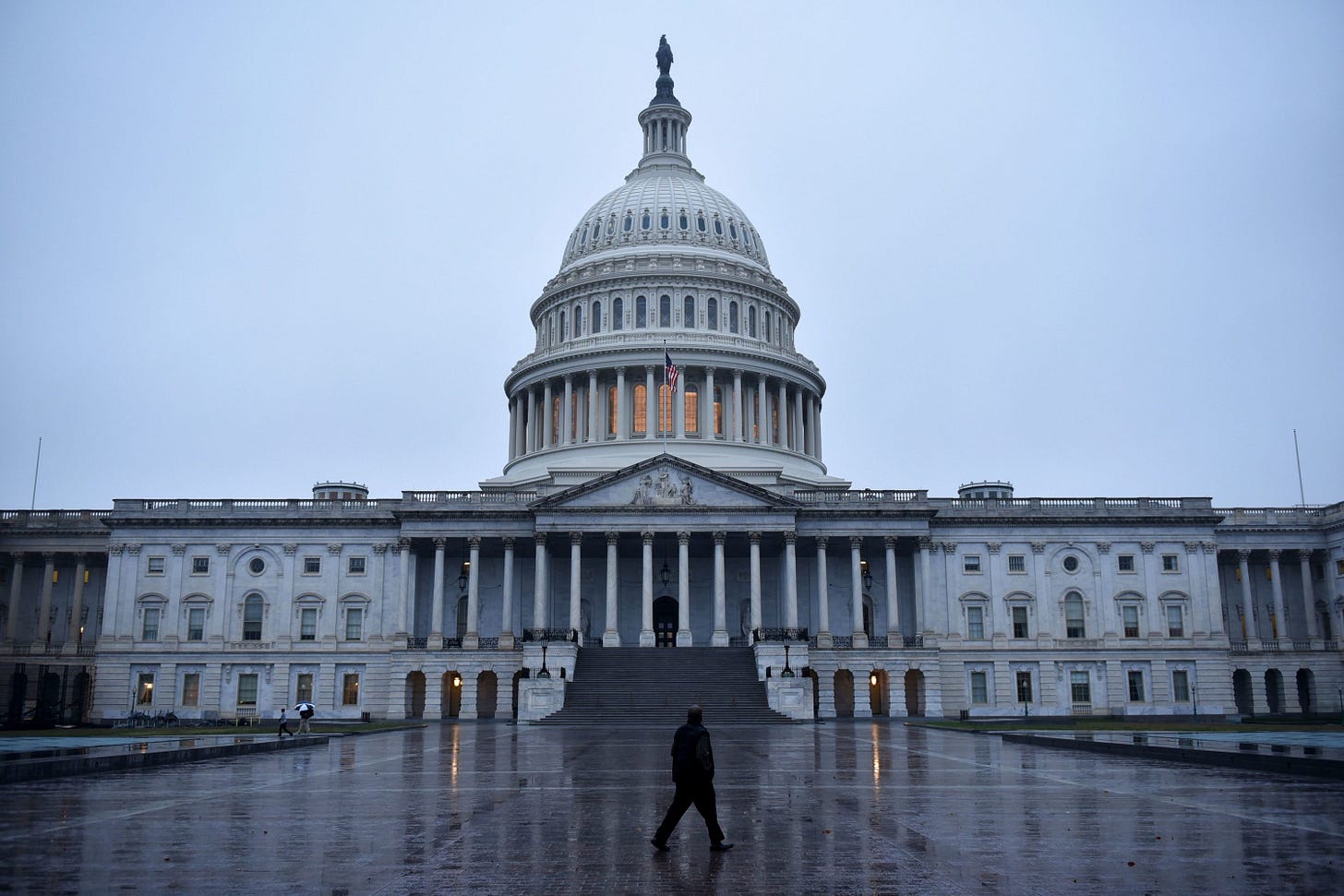America's Primary Elections Are Screwing Up Our Politics
Here's how to fix them.
The current crop of Republican freshmen are not exactly a testimony to democracy. How did we get to a place where people like Representatives Lauren Boebert and Marjorie Taylor Greene win places in Congress?
The answer is that they are the products of partisan primaries that tend to elevate the most extreme voices in our politics.
Just look at the numbers: only 58,378 voters supported Boebert in her Republican primary, which amounts to just 10 percent of all eligible voters in her district. Greene won 26,615 votes, or 5 percent of eligible voters, in her primary.
While Greene and Boebert are notable standouts, they have lots of company. The majority of Congress is elected to Congress after winning just a fraction of support of voters in partisan primaries.
A new report from the Unite America Institute makes the case that this primary problem is disenfranchising voters, distorting representation, and creating political division.
The problem is that, for a supermajority of Congress, just 10 percent of Americans are actually voting in the election that really decides who goes to Washington. That’s because of both the geographical self sorting of the electorate and the imposition gerrymandering. The combination of these two drivers has resulted in a country where 83 percent of congressional districts in 2020 did not have competitive general election races.
Which means that the important election is the primary vote. Yet, primaries typically draw = fewer and less representative voters. In Boebert’s district, for example, a recent survey found that GOP primary voters were much more likely (60 percent) to identify as “very conservative” than Republicans who only voted in the general election (35 percent). GOP primary voters were also twice as likely to favor uncompromising leaders over those who seek compromise.
This primary dynamic—with low and unrepresentative participation—in turn influences the incentives members of Congress face. Instead of working to represent all of their constituents because they worry about having to win a general election, members fear being “primaried” from their far right or left. As Denver Riggleman—a former Republican congressman who was beaten in a primary by a challenger from his right—writes, “[O]ur political system today incentivizes extremism and polarization. Candidates for office compete in hyper partisan primaries where the most successful politicians are those who appeal to the most radical minority of constituents.”
And when open seats emerge, as was the case in Georgia’s 14th Congressional District last year, campaigns quickly become about who can shore up the extreme bases in both parties. That system rewards candidates like Greene, who can win with deep, but narrow, factions of an already small electorate.
The problem is not unique to Republicans. In 2018, Alexandria Ocassio Cortez ousted incumbent Joseph Crowley by winning just 16,898 votes—or 4.3 percent of all eligible voters in her district—in the Democratic primary. Over the last two years, the only five Democratic incumbents to lose to a primary challenger did so to someone more ideologically extreme than themselves.
Nonpartisan primaries can solve the primary problem. Under such a system, all candidates—regardless of partisan affiliation—run on the same ballot in an election to all voters. The top vote getters advance to the general election, where whoever earns a majority of the votes is declared the winner.
This system changes incentives in a number of ways. Candidates are encouraged to reflect the views of all of their constituents, not just the most politically engaged and partisan. They are also incentivized to campaign on ideas, not mere partisanship, since multiple candidates from the same party can wind up on the general election ballot. Research by USC political scientist Christian Grose finds that these nonpartisan primaries have real impact: newly elected members of Congress from California and Washington districts with nonpartisan primaries are 18 percent more moderate than their counterparts representing districts with closed primaries.
Recently, voters in Alaska successfully passed a ballot measure that will implement the country’s first “Final-Four Voting” system in which a top-four nonpartisan primary will be combined with an instant runoff in the general election. The policy is a direct response to the primary problem in Alaska: In 2020, five incumbent Republicans lost seats to more conservative primary challengers.
This new system is likely to help U.S. Senator Lisa Murkowski because it should prevent her from losing a low-turnout Republican primary to a fringe candidate running to her right. And having this primary reform in place has freed Murkowski to be an independent voice open to voting her conscious, as she has done throughout her career.
The political calculus our elected officials face really matters. If we want to fix America’s politics, we have to fix the incentive structures which govern how politicians act. Nonpartisan primaries are a big piece of low-hanging fruit.


